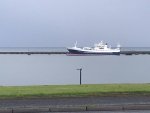Yealm
Well-known member
I'm trying to learn the Colregs lights over the Winter !
Confused as to the distinction between Fishing vessel (R/W) and Trawler (G/W).
I get that a trawler pulls a net along behind to catch fish.
Does that imply that a fishing vessel doesn't use a net - instead is pulling up lobster pots or using a fishing line ?
And what are all the many small/medium sized fishing boats I see around the Southwest coast - are they fishing vessels (R/W) or trawlers (G/W) ?
Also, do they display these special lights all the time (eg leaving harbour en route to fishing grounds) or only when they're actively engaged in fishing ?
Finally, what on earth is a purse seine net ?!
Thankyou so much
Confused as to the distinction between Fishing vessel (R/W) and Trawler (G/W).
I get that a trawler pulls a net along behind to catch fish.
Does that imply that a fishing vessel doesn't use a net - instead is pulling up lobster pots or using a fishing line ?
And what are all the many small/medium sized fishing boats I see around the Southwest coast - are they fishing vessels (R/W) or trawlers (G/W) ?
Also, do they display these special lights all the time (eg leaving harbour en route to fishing grounds) or only when they're actively engaged in fishing ?
Finally, what on earth is a purse seine net ?!
Thankyou so much

